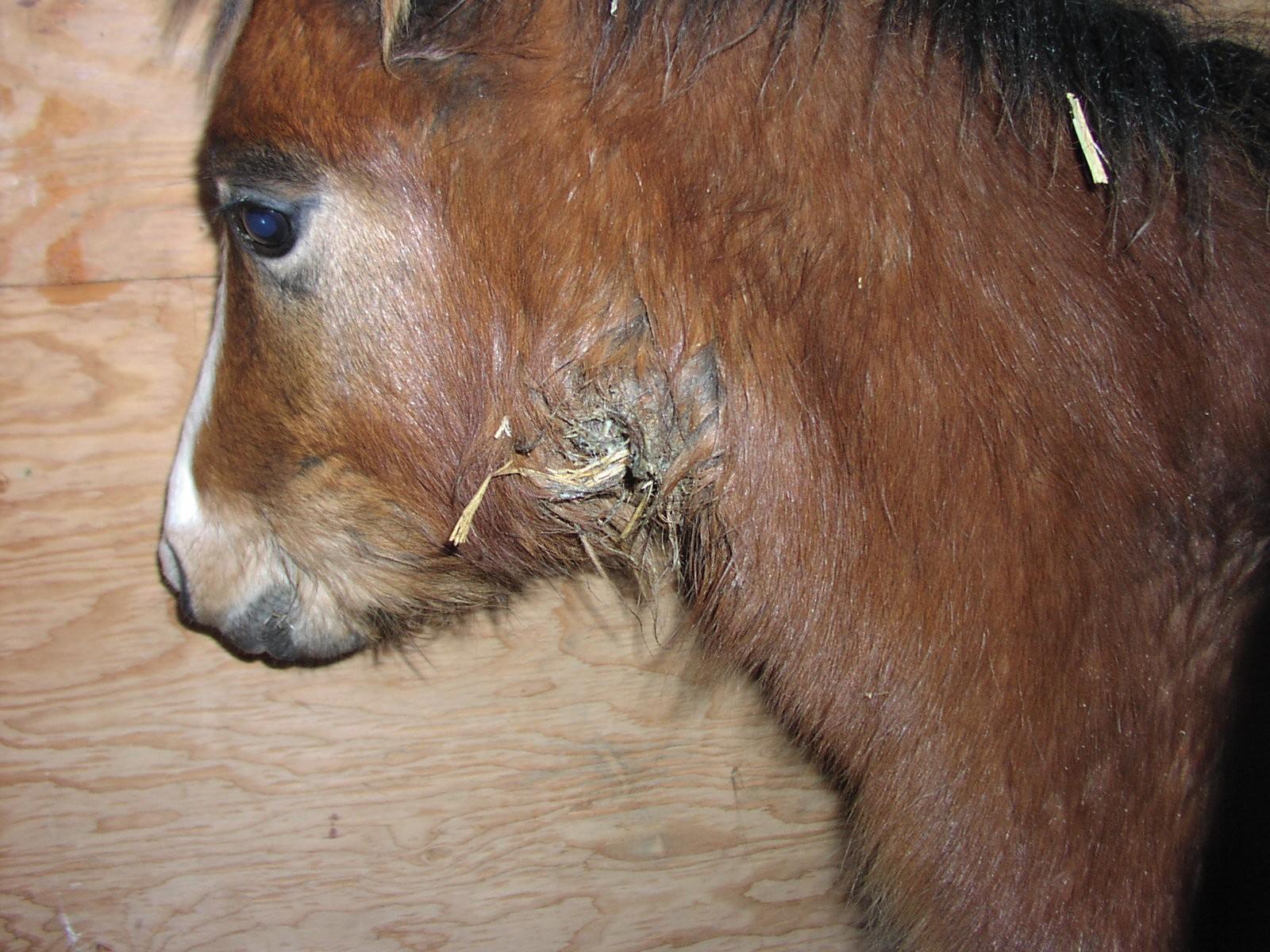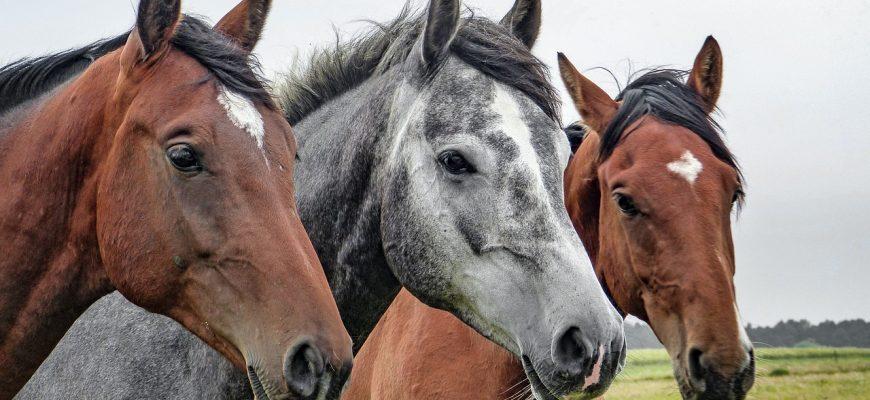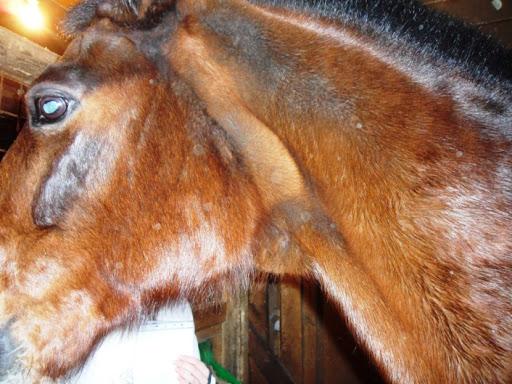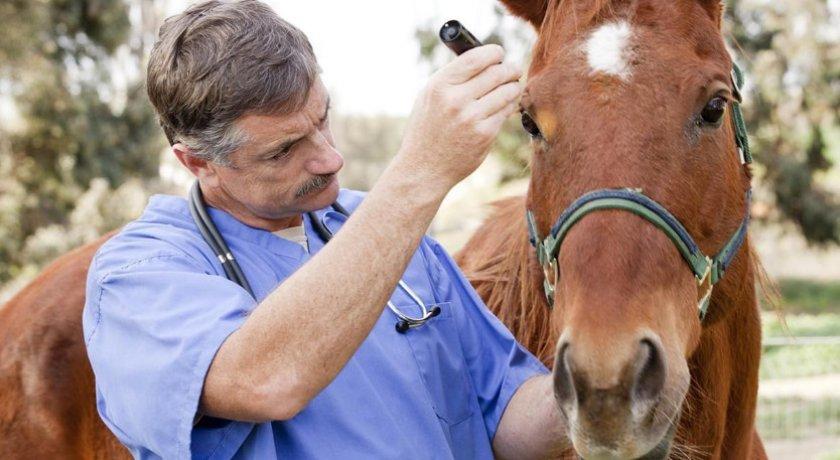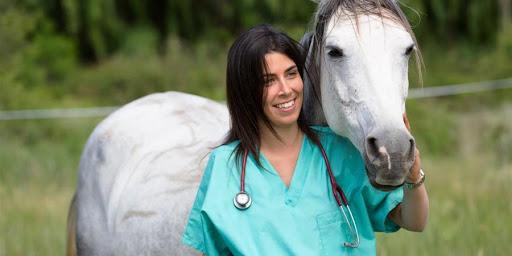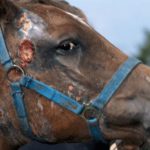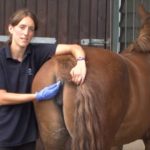The first mentions of the disease are found in documents of the 16th century. And the infectious nature of horse washing was established in the 18th century. Farmers and horse breeders all over the world have encountered animal diseases. Fever, high body temperature, purulent lesions of the lymph nodes, inflammatory processes in the pharynx and nasal cavities are the main signs of the disease in horses.
Description of the disease
Myt refers to acute infectious diseases (Coryza contagioza equorum). The causative agent is streptococcus.The incubation period is 3-14 days. The blood and lymph of an animal are the routes of spread of the pathogen. The disease affects horses everywhere. Young horses (from six months to 5 years old) suffer from the infection. Foals up to 6 months of age do not get sick thanks to their mother's milk, with which they receive immunobodies and complete proteins.
Adults (over 5 years of age) can also become infected, but such cases are rare. Fatalities, according to statistics, occur infrequently. However, one must keep in mind the high rate of spread and transience of the disease in horses, which increases the likelihood of death of a large number of individuals.
The causative agent of infection
Myriad streptococcus does not produce spores. The causative agent of the disease has the form of a long, motionless chain formed from dozens of individual links, flattened in diameter (04-1 microns long). Streptococcus spp. is characterized by long-term preservation in the external environment. In rooms with an adobe base, the infection persists for 8-9 months.
Advice! It is necessary to thoroughly wash the premises to remove purulent discharge from horse wounds, since in dry pus the infection remains viable for 11-12 months. It is difficult to neutralize with disinfectant solutions.
Streptococci live on straw, hay, and horse hair for 20-22 days. The causative agent of the disease is sensitive to sunlight (they die after 7-8 days). When the surface is heated, streptococcus dies within 50-60 minutes, and if boiled, it dies instantly.
Causes of appearance and habitat
Not only sick animals become sources of infection. Even horses that have recovered from illness or healthy horses that carry bacteria pose a danger.The spread of the disease occurs through airborne droplets due to direct contact between animals (touching, sniffing). Indirect contact is a common way of spreading infection. Streptococcus habitat: feed and feeders, water and water containers, surfaces of stables where sick horses were kept.
There are several factors that can provoke the appearance of mucus:
- long-term transportation of horses in poor conditions;
- animals are kept in inappropriate premises;
- prolonged cold;
- sharp temperature fluctuations during rainy periods.
Horses that are bred in areas with cold and temperate climates are most often affected. During the year, outbreaks of the disease are observed most often during the following periods: late autumn, winter and early spring. Poor nutrition of animals during drought also contributes to a decrease in immunity.
The course of the disease and its symptoms
Most often, the disease develops and resolves in an acute form. Blood and lymph spread streptococcus throughout the animal's body. The incubation period can range from 3 to 14 days. There are two types of disease progression.
Typical shape
A typical horse wash is characterized by fever and an increase in body temperature up to 41 °C. The animal experiences a decrease in appetite, a depressed and lethargic state. The first symptoms are inflammatory processes in the pharynx, problems with swallowing food and water appear. It happens that the water is not swallowed, but poured out through the nostrils. Rhinitis manifests itself in the form of purulent discharge from the nasal cavity. During palpation, compaction of the lymph nodes under the jaw is felt.
The inflammatory process in the lymph nodes lasts several days, and the swelling begins to spread to the parotid region and the lower edges of the cheeks.
When the abscess opens, thick pus begins to ooze. After some time, the flow of pus decreases and body temperature normalizes. During illness, urine output decreases, and during recovery, urine volume increases. A typical wash lasts 14-20 days.
Atypical wash
In this case, the disease in horses occurs in a mild or severe form. Abortive (mild) washing is characterized by slight enlargement of the lymph nodes under the jaw and an inflammatory process in the nasal cavity. Symptoms of the disease: cough, loss of appetite, depression, fever. The infectious disease lasts about a week.
The disease in its metastatic form is severe - the animal's lymph nodes in the chest and abdominal cavities become enlarged. Sometimes there is purulent inflammation of the joints. In case of severe inflammation of the nodes of the parotid glands, pus enters the larynx and lungs, contributing to the development of bronchopneumonia. Subsequently, swelling of many parts of the body (legs, abdomen, dewlap) is observed.
It is impossible to predict the development of the disease. Sometimes animals recover within one to two weeks. And sometimes the rapid spread of infection leads to the death of the animal after 3-5 days due to swelling of the larynx.
Complications that occur after washing are also dangerous: suffocation, petechial fever. It must be admitted that signs of fever may appear in a small number of horses that have been ill with washing (literally 1-2%). Symptoms of the disease: swelling forms on the mucous membranes of the nasopharynx, legs, and scrotum. On the mucous membrane of the new cavity, hemorrhages appear in the form of dots, gradually turning into spots or stripes. Swelling of various parts of the body is observed.
Disease detection methods
Streptococcus mucinus is found in horses in nasal discharge and unopened abscesses. Laboratory studies of discharge, the clinical picture of the disease, and pathological data are used to make a diagnosis.
When the lymphatic system is affected, inflammation of the lymph nodes is observed, which is felt upon palpation. In case of severe suppuration, areas with abscesses are opened. The animal develops a high temperature that does not subside, loss of appetite, and severe exhaustion.
Treatment and precautions
Mytosis infection is fought with local and general treatment. Generally, this includes the use of antibiotics. To select an effective medicine, be sure to check the sensitivity of streptococcus. Antibiotics from the cephalosporin series are usually used. As an option, intramuscular injections of bicillin are prescribed (one injection per day is given for 3-4 days).
In severe cases (metastatic inflammation), intravenous administration of 33% alcohol diluted in 20-30% glucose with the addition of 1% norsulfazole is prescribed. Caffeine or camphor is administered intramuscularly if there is a weakening of cardiac activity. Limit the volume of water for drinking, and add hydrochloric acid to the water (dilute 8-10 ml in a bucket of water). It is recommended to do a light massage of the swollen areas. If there is a threat of suffocation, a tracheotomy is performed.
To speed up the maturation of abscesses in the lymph nodes, a special ointment, mercury serpentine, is rubbed into the skin. The treated areas of the skin are pre-prepared - the hair is cut off, the skin is degreased. After carefully rubbing in the ointment, it is advisable to apply a warm, dry bandage to the treated area of the body.
Important! Mature abscesses must be opened.
The wound is cleaned of pus and dead skin. Using a weak solution of potassium permanganate, wash the cavity being treated. The edges of the cavity are lubricated with iodine solution. If the wound heals normally, regular rinsing of the cavity is not required. The area is processed dry.
In order to prevent the occurrence and spread of the disease, new horses are kept in quarantine for approximately 30 days. When the first symptoms of washing appear, all horses are visually inspected and their temperature is measured. Sick individuals are isolated and treated.
To prevent the spread of infection, all animals are provided with individual pens, feeders and drinking bowls. The stables must be cleaned and sprayed with a special disinfectant solution. In the premises, the floors, walls, feeders, buckets, and animal care items are treated. Recovered horses are also wiped with disinfectants.
How to prevent catfish infection
The main goal of preventive measures is to increase the horse’s body’s resistance to infection. For this purpose, foals over six months old are provided with adequate nutrition and good maintenance. The stables are kept clean - the pens are washed regularly and dirty straw is removed.
In the summer, animals need to be grazed on pastures longer. At the same time, reliable canopies must be installed in the grazing area so that horses can shelter from bad weather. Upon admission, new individuals are carefully examined and their body temperature is measured. If suspicious symptoms appear, sick individuals are isolated.
Do not underestimate even isolated and mild cases of myta in horses, since the infection causes significant harm to animals. Foals exhibit temporary developmental disorders.And adult horses lose their ability to work. Therefore, it is recommended to constantly carry out preventive measures.

